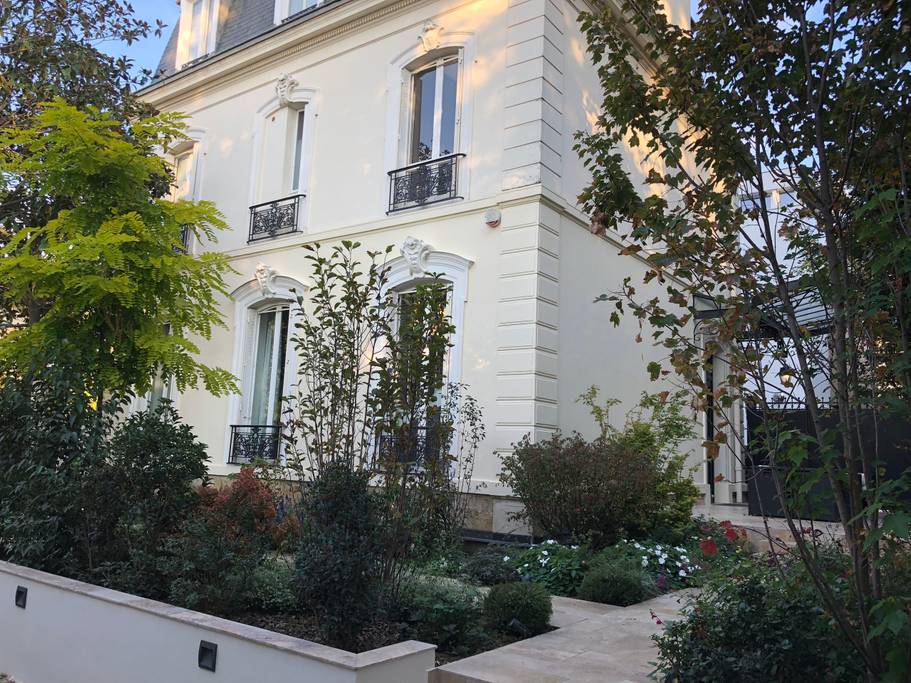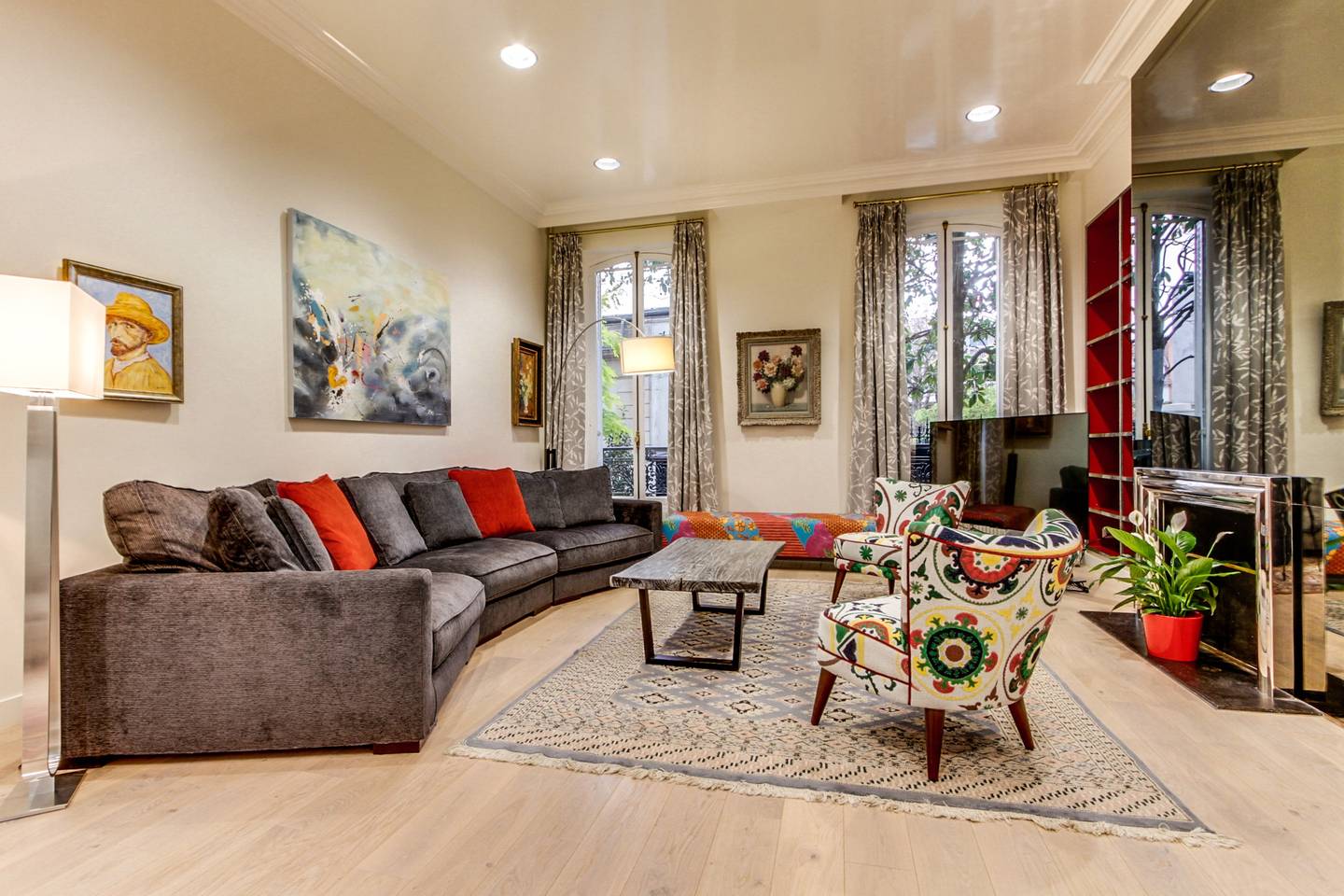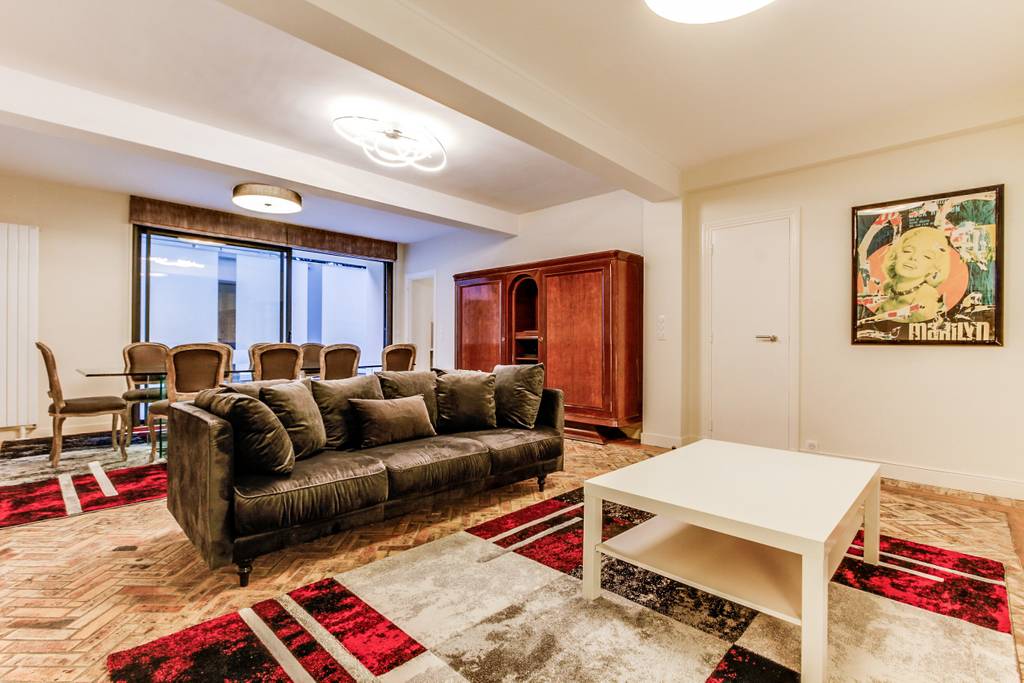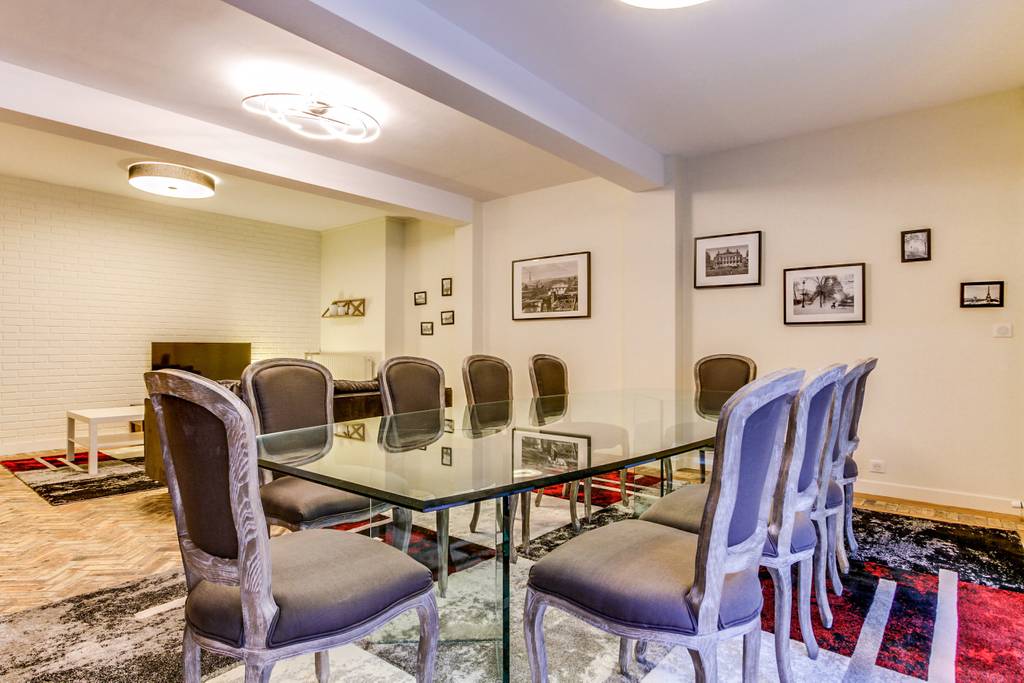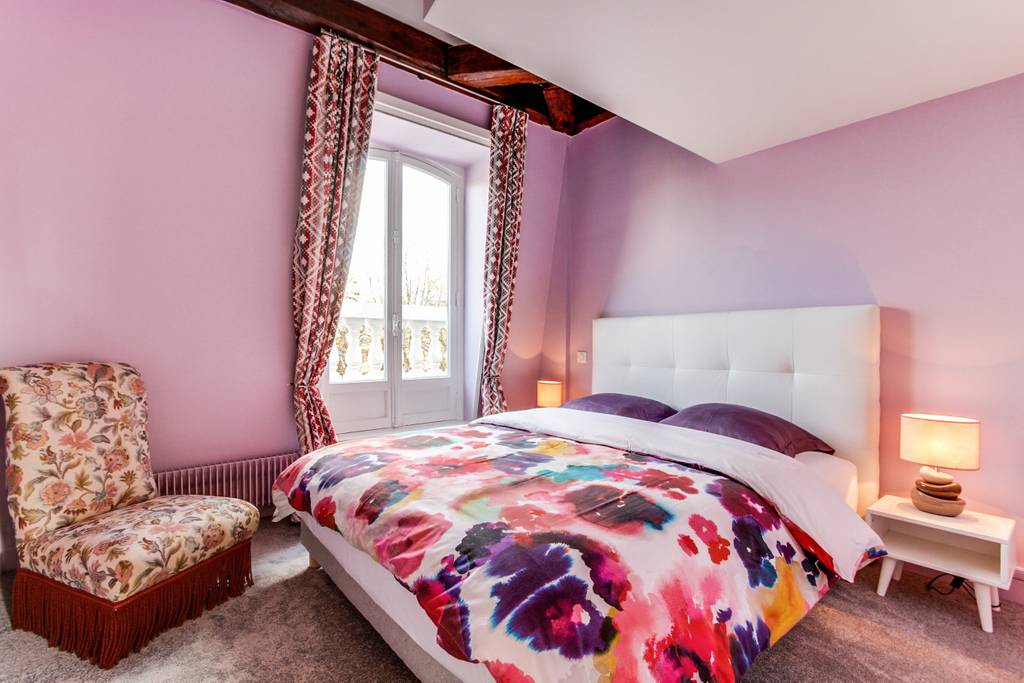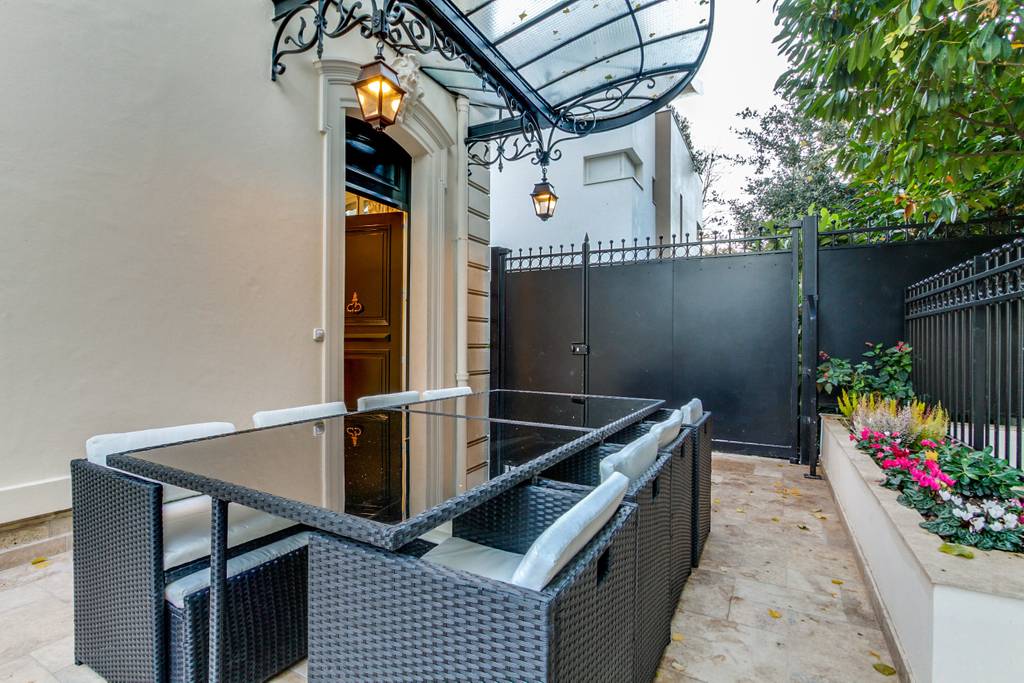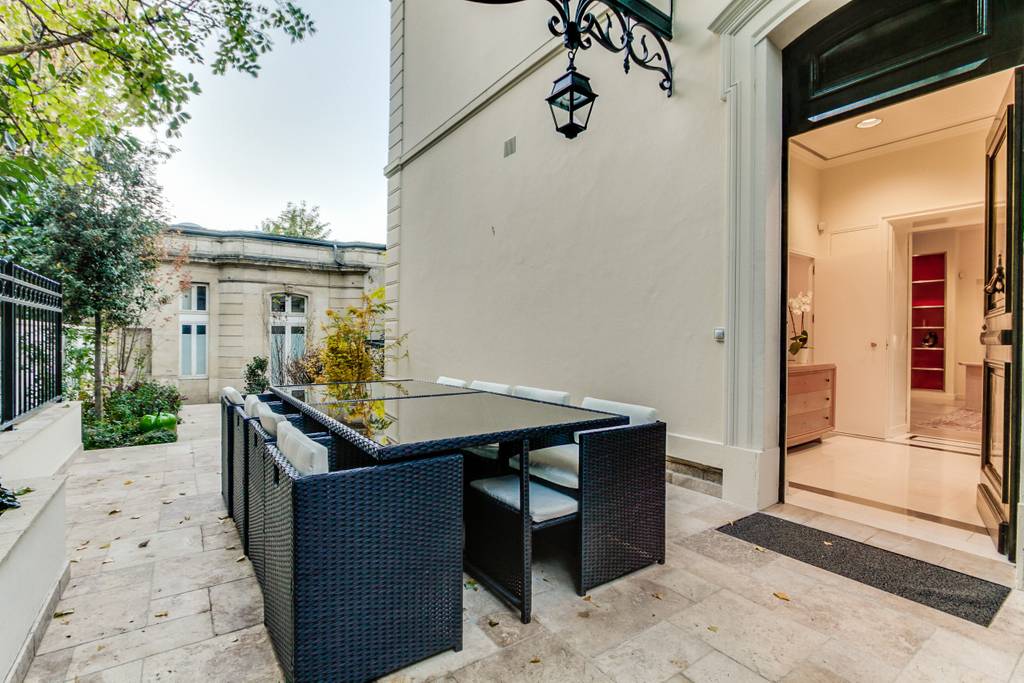April in Paris!
One Week Only
Sunday, April 5 – Saturday, April 11, 2020
and ONLY for a group of 5 – 6 Friends or Family!
Sunday
We will meet you at the CDG airport or Rail Station at your arrival times and transport you to your Maison home for the week. Enjoy a meet-and-greet with homemade hors d’oeuvres and locally produced wines, followed by a tour of the Mansion. Then relax on the terrace or explore the estate until it is time for an “Opening Night” Gourmet Welcome dinner. Dinner prepared by Le Cordon Bleu-Paris Alum Chef Walter Eagleton and Artistic Gourmet Adventures.
Monday
Eiffel Tower
It was built by the French engineer Gustave Eiffel which was already famous at the time for building bridges. He spent several years building the Eiffel Tower as a monument for the World Exhibition in 1889. Although today, it is, without doubt one of the most recognizable monuments in Europe, one that can be compared to the Statue of Liberty in New York, the Big Ben is London and the Taj Mahal in India, it was not supposed to be permanent when it was first introduced. After the Eiffel Tower was built, it faced a lot of criticism from Paris artistic and literary elite. The fact is, that the tower was almost torn down sometime in 1909 while the only reason it was eventually kept was due to its ability to provide a perfect platform for transmitting antennas.
Slowly, the Eiffel Tower became a permanent part of Paris view, settling in the hearts of Parisians as the symbol of Paris providing it with the most beautiful and famous skyline during the evening.
It is possible to climb up the stairs as far as the third floor. Going up to the top though is possible only using the elevator. From the top of the Eiffel Tower, Paris at 1,050 ft (320 meters) is very romantic.
River Cruise
Cruise up the majestic Seine and see how Paris famous sites are revealed from a new perspective.
Champ de Mars
The Champ de Mars, Paris (in English – “Field of Mars”) is a large public green park, one of the nicest parks in Paris for families, located just between the Eiffel Tower and the École Militaire . The grassy field with lines of trees crossing it was originally created to host parades of the French Military Academy. Today, the Champ de Mars park is one of the best spots in Paris for picnics or just for hanging out. It is even allowed to walk on the grass itself which is very unusual for Paris.
Rodin Museum
The Rodin Museum (Paris), although officially a museum and not one of Paris parks, is one of the best and arguably one of the most pleasant cultural experienced that Paris has to offer and a great Paris museum. Rodin, while living in Paris, used the Hôtel Biron as his workshop from 1908 and gave the entire collection of sculptures and van Gogh ‘s and Renoir’s paintings to the French government so that they would turn the building into a museum. Although today Rodin may be considered by many as the father of modern sculpture, when he first presented his works he was actually considered vulgar.
The Rodin Museum Paris today holds the most important works of Rodin’s such as The Kiss, The Thinker, and The Gates of Hell, some are displayed inside the building while the well-known sculptures are displayed in the garden.
Alexander Bridge
Alexander Bridge is located right between all of the best attractions in Paris and is considered as the most decorated bridge in Paris, this bridge is well worth a visit. The Alexander Bridge Paris, with its Art Nouveau lamps, winged horses statuses and nymphs connects the two banks of the Seine from the Champs-Élysées quarter to the Eiffel Tower quarter. The construction, an impressive achievement for the time, started by the end of the 19th century to honor Tsar Alexander III and lasted several years until the Universal Exposition of 1900. Notice the similarities between the bridge and the Grand Palace behind it on the right bank.
Place de la Concorde
Paris’ largest square at the end of the Champs-Elysees.The Place de la Concorde (Paris) is located at the very beginning of the Champs-Élysées avenue and is an important site in Paris. It was once named after Louis the 15th and is now one of the major touristic squares in Paris. As it happens, Place de la Concorde Paris is also the largest square in the French capital. It was Muhammad Ali, viceroy and pasha of Egypt, who took the impressive 3300-year-old obelisk from the temple of Ramses at Thebes and gave it as a present to France in 1831. But even before the obelisk was placed in the Place de la Concorde, Paris was quite famous when it became the Place de la Révolution (The Square of the revolution), where Louis the 15th, Marie-Antoinette, and some 2,500 others lost their heads to the guillotine in the late 18th century.
The nice 18th-century building facing the Place de la Concorde is the Hôtel Crillon which was originally built by Gabriel, architect of Versailles’ Petit Trianon, as a private home. Take your time to stroll around the square and see the female statues placed in the corners of the square. These statuses represent the eight largest cities in France.
Arc de Triomphe
Inspired by Rome’s Arch of Titus, the Arc de Triomphe is located in Paris in the center of the world’s largest traffic roundabout and it is the biggest and tallest triumphal arch in the world – about 49 meters (161 ft.) high and 44 meters (144 ft.) wide. Arc de Triomphe is located 2 kilometers northwest from the place de la Concorde in the middle of the well know and extremely busy “Place Charles de Gaulle” (or better known to Parisians as “Place de l’Étoile”). This 161 foot triumphal arch was commissioned by Napoléon in 1806 to honor his imperial victories but it is only 20 years after he died that the Arc de Triomphe was finished, in 1836. Some important events took place under the great Arc de Triomphe. The greatest state funeral, for one, was of Victor Hugo. His coffin was placed in 1885 here while many Parisians came to place their last respects. On the other hand, some of France most humiliating moments are also related to this place, notably in 1871 and 1940. The sights of German troops walking under the arch are not to be forgotten by the French people.
It is well worth climbing the stairs to the top of the arch from which you can see the 12 radiating avenues that goes in and out of the circuit. You can view across the Champs-Élysées from the Arc all the way to the Place de la Concorde and the further away Musée du Louvre (the Louvre Museum). Before you leave, take a closer look at the Arc as it is also well known for its magnificent sculptures by François Rude. Pay a special notice to The Departure of the Volunteer, to the right of the arch when viewed from the Champs-Élysées.
Home to the Maison
Tuesday
Saint Sulpice
Just slightly smaller than Notre-Dame, Not as famous as The Sainte Chapelle, with its 370 foot long, 190 foot width and 100 foot tall, Saint Sulpice Church (Paris), dedicated to Sulpitius the Pious, the second largest church in Paris.
Louvre Museum
The Louvre Museum (Paris) is in fact the largest art museum in the world and the home for one of the finest art collections anywhere to be seen including two of the most famous painted woman – the Mona Lisa and Venus de Milo just to name two out of the 30,000 exhibits displayed in the Louvre Museum.
The Louvre Paris was originally built as a fortress around year 1200 and was reconstructed again around 1650 for the personal use of the king. It was in 1793 that the French revolutionists have decided that this should become French’s first national museum.
Remember that this gigantic museum stretches for almost half a mile (750 meters). It was François the first and Louis the 14th who purchased most of these paintings and sculptures while the rest were contributed or purchased (and in many cases simply taken) by Napoleon later to be returned to the original owner’s family.
The most famous smile in the world, better known as the Mona Lisa, was ordered by François I from Leonardo da Vinci. It gained most of glory after it was stolen in 1911 by a Louvre employee, who simply left the building with the painting under his coat.
Tuileries Gardens
The spectacular Tuileries Gardens (Paris), Jardin des Tuileries can be found just between the Louvre and the Place de la Concorde. It was designed in 1564 by Catherine de Medici as a garden for the Tuileries Palace (for Louis XIV). The Tuileries Gardens are probably the most French garden you could find all across Paris, with fine rows of trees and well-formed paths. The garden has opened its gates for everyone to stroll in, back in 1667 but it only became a public park after the French Revolution. It was once the place to see and be seen in Paris and as of today, it is the place where locals meet to enjoy a nice afternoon walk or just relax. The Tuileries Gardens Paris takes its name from the fact that this area was once populated with roof tile factories, made in a special oven called tuileries. The Tuileries Gardens were well documented by many impressionists’ painters such as Monet and Renoir which seems to love the lively colors reflected by the many flowers, grass and water. There are also huge 18 bronzes statues in the Tuileries Gardens created by Maillol.
Palais Garnier Opera
This grand theatre, founded by Louis XIV, has opulent palace-like décor. The Palais Garnier National Opera House was constructed from 1857 to 1874 and designed by Charles Garnier. The neo-baroque landmark building is located on Boulevard des Capucines and is named after the architect in honor of the stunning and opulent architecture. The building was the first home of the Paris Opera Company and is now also home to the Paris Opera Ballet. The exquisite building exterior has seven arches on the lower level separated by allegorical figures representing the arts. On the second level there are seven openings separated by columns with bronze busts of famous composers. The façade is topped by a central green copper dome. On either side are figures representing poetry and harmony and topping the dome is a statue of Apollo. Inside there are interconnecting corridors and staircases leading up to different levels. The décor is in rich velvet, there are sumptuous sculptures of cherubs and nymphs as well as plenty of gold leaf. The breathtaking Grand Foyer has a ceiling mural painted by Paul-Jacques-Aime Baudry and large chandeliers the length of the 154 meter long room. Leading up to the Grand Foyer is the Grand Staircase of white marble with a balustrade of green and red marble. On pedestals along the staircase there are female figures and above the staircase is another ceiling canvases painted with Greek mythological figures. The opulence continues in the auditorium which is a traditional Italian horseshoe-shape, seating 1,979 and facing a proscenium arch stage. A large chandelier hangs in the middle of the ceiling surrounded by paintings by Marc Chagall. Each element of the Opera House has been perfected.
Free time to shop the Hausmann district featuring:
Galeries Lafayette (A global event-based retail and fashion leader, Galeries Lafayette Haussmann has become a Paris icon since its creation in 1894, and a must-see venue in the capital.
The historic store (established 1912), is composed of three buildings bringing together the best of fashion, luxury items, accessories, homewares, and food with over 3,500 brands, including Chanel, Dior, Louis Vuitton, Saint Laurent, Céline, Chloé, Cartier, Chaumet, Moynat, Delvaux, Fauré Le Page, Loewe, Longchamp, Isabel Marant, Maje, Sandro, A.P.C., The Kooples, Zadig & Voltaire, Acne, De Fursac, Guerlain, Sisley, Hermès, Diptyque, L’Occitane, Jacadi, Tartine et Chocolat, Petit Bateau, Bernardaud, Christofle, Pierre Hermé, Angelina, Alain Ducasse, and many more.
Participating in the outreach of the French ‘Art de Vivre’ and the promotion of creators, this flagship store is like a Parisian fashion theatre, open to the world and whose mission is to offer its French and international clients a unique experience, revelling in all the energy of creation.)
Printemps (Created in 1865 by the visionary Jules Jaluzot and listed as a historical monument, Printemps Haussmann is today one of Paris’s leading department stores.
More than 44,000 m² devoted to luxury goods, fashion, glamour and dream products;
25 floors over 3 buildings;1 million references and over 300 brands sold exclusively;
a panoramic terrace with an exceptional view over Paris;
With its magnificent art deco cupola, its Haussmannian facade and spectacular window displays, Printemps Haussmann offers you an unforgettable experience at the heart of Parisian style and fashion, and offers you the opportunity to find the latest in fashion, luxury, home-ware and beauty all in one place through a selection of great French and international brands.
Printemps Haussmann and fashion go together and the store reflects current trends and invents new concepts. In 2001, Printemps Haussmann unveiled its new showcase for luxury goods, Printemps du Luxe; in 2003, it inaugurated the biggest beauty space in the world; in 2006 an entire floor devoted to footwear opened (over 3,000 m²), as well as a Food Hall grouping together the 10 biggest brands in luxury gastronomy and delicatessen.
Printemps Haussmann also offers 7 eateries for coffee & tea, traditional meals, as well as a wide choice of cuisine.)
Uniqlo (Uniqlo is the leader in ready-to-wear fashion in Japan with their ‘casual’, multicoloured, and affordable collections. The brand (a contraction of ‘unique clothing’) has opened a flagship store in Paris measuring 2,000 m² over three floors.) Home to Maison
Wednesday
Montparnasse Tower
Montparnasse Tower is a tall modern building with an observation deck (Observatoire Panoramique de la Tour Montparnasse) where you can get views across the Paris skyline. Take Europe’s fastest elevator and within 38 seconds you will be at the top of the tower; 200m above Paris. On the 56th floor you can see Paris at your feet. Go up a little further and you will be on the highest rooftop in the city where the views are even more amazing. Among the landmarks you can see from the observation deck there is, of course, the Eiffel Tower. The view is 360˚ so you can see places like the Sacre-Coeur; Montmartre; Notre-Dame Cathedral; the Pantheon; the Louvre and Les Invalides. While on the observation deck you can use touch-screens to learn more about the landmarks below. There are also virtual kiosks and a short film about the history of Paris.
Luxembourg Gardens
With flowers all over the Luxembourg Gardens (Paris), green grass and statuses spread all over its 23-hectares, Parisians of all ages come to relax and stroll through the formal gravel paths of Jardin du Luxembourg. In its center, stands the glorious Palais du Luxembourg built by Marie de Médici wife of Henri the 9th in 1612. The palace was used for many functions throughout the history. Since 1958 it has been used to host the French Senate. You may also find the Luxembourg Gardens Paris to be interesting and amusing by seeing pony rides, sailing one of the toy boats or going to the southern part of the garden where they will find the urban orchards alongside the Rucher du Luxembourg where honey is produced.
Just outside the park, you will find the Saint Sulpice church. This classical building has mural paintings by the French painter Eugene Delacroix, as well as beautiful stained-glass windows and sculptures. While in the park, be sure not to miss the Fontaine des Médicis.
Pantheon
The Pantheon (Paris), a great example of 18th-century neoclassicism architecture, was ordered in 1750 as an abbey church to honor St. Geneviève (the patron saint of Paris). Its design was inspired by a Greek cross with a dome somewhat similar to St. Paul’s in London. The construction works of the Pantheon Paris started 15 years late but due to financial problems it was presented to the public on in 1789 (Revolution), probably not the best time for such an fancy monument to be open in Paris. The result however is an enormous dome that looks over and is seen from all over. The building of the Pantheon (Paris) changed its purpose at some point to become a mausoleum that holds the remains of some of France’s most famous people such as Victor Hugo, Emil Zola and Marie Curie. While entering the Pantheon, look at the beautiful wall paintings of St. Geneviève’s life.
Sainte Chapelle
La Sainte Chapelle, was built by King Louis IX to host the remains of the True Cross, including the original Crown of Thorns which was purchased from the emperor of Constantinople. Today the Holy Chapel Paris is considered among the highest achievements of the Rayonnant period of Gothic architecture and is the only surviving building of the Capetian Royal Palace on the Île de la Cité .
This truly amazing architectural treasure owns the oldest stained-glass windows in France. To truly experience the effect of the Holy Chapel try to visit it when the sun is shining – 65 hundreds square feet of stained glass that stands above painted stonework of 1130 biblical figures appears to let the colorful light flow through the windows.
Although heavily damaged during the French revolution and later restored during the 19th century, the Holy Chapel retains one of the most extensive collections of 13th century stained glass anywhere in the world.
Plan to visit on a sunny weekday morning when near the Holy Chapel, Paris is still quiet and you can avoid the long lines and fully admire the effect of the light.
Orsay Museum
The Orsay Museum is the second visited museum in Paris and should be payed a visit even if you have to miss all other museums in Paris after the Louvre. Opened in 1986, facing the Seine, the Orsay Museum (Paris) is a beautiful renovated former train station which holds the world-famous collection of Impressionist and Post Impressionist France’s national collection of art, created in the years 1848 to 1914. It has all the famous names but also all the less known styles such as the symbolists, the nabis, the pointillists, and realists.
Start your visit in the Orsay Museum at the upper level where you will first notice that as a monument to the Industrial Revolution, the building had a glass roof allowing natural light to flow in. In the third floor you will see all the famous Impressionist paintings by Monet, Pissarro, Renoir, Manet and also some post-Impressionist works by Cézanne, Van Gogh and more.
Probably the most famous painting in this floor was painted by Manet in 1863 and is called – “a Picnic on the Grass”. Degas is naturally also represented here with his paintings of ballet dancers. Renoir’s famous painting, the Moulin de la Galette is also here. Monet, who was fascinated by the effect of changing light, brought on Rouen Cathédrale to life in a series of five paintings which can be found in the Museum’s third floor. Don’t miss the views from the balcony of the Sacré-Coeur which inspired many of the Impressionists.
The second floor of the Orsay Museum Paris has art nouveau rooms in which you can see an impressive collection of sculptures, furniture and other decorative objects. Some of the rare objects created by Guimard are here as well as works by Tiffany and Lalique.
Home to Maison to get ready for
Le Moulin Rouge dinner and show
Thursday
Dali Museum
The Dali Museum (Espace Dali), is located in the heart of the Montmartre and holds an art collection devoted to the works of the surrealist artist Salvador Dali. Most of the works presented in this museum are sculptures and engravings.
Place du Tertre Montmartre
Renoir, Dali and Van Gogh lived in their artist apartments, frequented the back alley cafés and honed their skills as artists in the town square – Place du Tertre – offering to do portraits of visitors to the district. Every inch of allowable space contains an artist, supplies, samples and canvases of every imaginable art form. Those artists that are not asking you if they may do your portrait, are legitimate, authorized artists. The rest are of the pirate class and are most likely to scalp you price-wise and produce an inferior piece. You cannot help but notice the works of art hanging on ropes, easels, display cloths, and even from trees. Some are beautiful and some are quirky. Some are originals and some are prints of the originals. Be careful before you buy. You are allowed to haggle for the best prices. And remember, many amateur arts fan have returned home with a print. The square embraces a small park framed by the Basilica on one side and small stores, apartments and street cafés on the rest. One of the little shops is actually the Montmartre Cultural Center aka Espace Montmartre which has a permanent exhibit of Dali. In a small alcove off the square, is a café and flower shop honoring the children’s postcard artist Poulbot. After WWII, when the artist was held as a prisoner of war by the Germans, he established this café, flower shop and postcard center to help feed the hungry children in Paris. His family continues the mission today. The café is one of many that offers a quiet place for a cup of coffee or cold beverage while you people watch.
Sacre Coeur Basilica
The Sacre Coeur is a church and a basilica, located in the top of the Montmartre which is also the highest point in the entire city. The Sacre Coeur Basilica (Paris) is not as old as it looks. Paul Adabie designed the basilica on the late 19th century and the constructions ended several years into the 20th century. It was built to recognize the end of the Franco-Prussian War.
Step inside the Sacre Coeur Basilica to enjoy the lovely decorations and mosaics on the walls, the metal doors, the windows (all broken in 1944 and restored since) as well on the ceiling. The mosaic above the choir is considered one of the largest golden mosaics in Europe. Look for the “La Savoyarde” – the 19 tons bell which makes it one of the heaviest in the world.
The climb up to the gallery in the inner dome (271 foot high) is well worth the effort as the view is simply stunning. However, if you choose not to climb, you can still admire the view while standing on the front stairs of the Sacre Coeur Basilica.
At the bottom of the hill you will find some amusements for kids which may also enjoy the ride in the small cables train up the hill.
The Marais
From swampy to swanky, the Marais has a fascinating history. Like an aging pop star, the quartier has remade itself many times, and today retains several identities. It’s the city’s epicenter of cool with hip boutiques, designer hotels, and art galleries galore; the hub of Paris’s gay community; and, though fading, the nucleus of Jewish life. You could easily spend your entire visit to Paris in this neighborhood—there is that much to do. “Marais” means marsh, and that is exactly what this area was until the 12th century, when it was converted to farmland. In 1605 Henri IV began building the Place Royale (today’s Place des Vosges, the oldest square in Paris), which touched off a building boom, and the wealthy and fabulous moved in. Despite the odors—the area was one of the city’s smelliest—it remained the chic quarter until Louis XIV transferred his court to Versailles, trailed by dispirited aristocrats unhappy to decamp to the country. Merchants moved into their exquisite hôtels particuliers (private mansions), which are some of the city’s best surviving examples of Baroque architecture.
Pont Neuf-
Pont-Neuf is a stone bridge built in different stages between 1578 and 1607. The construction of a new bridge was decided in 1577 by king Henri III who laid the first stone on the 31st May 1578 in the presence of Mother Queen Catherine of Medicis and the Queen Louise of Lorraine. The construction ended in 1607 during the reign of Henri IV. The delay was due to the rebellion of the people of Paris against the king (1588-1598). In 1599, king Henry IV resumed the work and commissioned its completion to Guillaume Marchant and François Petit who modified the initial plan. Instead of supporting houses like any other bridges in Paris, the new bridge was the first to be ‘house-free’.
Notre Dame
The Notre Dame Cathedral is not only a Gothic architectural masterpiece but a site which was also the focus of Catholic Paris for 700 years. Although the cathedral is not France’s oldest or largest cathedral, it has very little completion in beauty and architectural harmony.
The work on the cathedral started on 1163 by Maurice de Sully, who was the bishop of Paris at the time. It took 182 years to complete this building in the summer of 1345. As Paris has changed , Notre Dame Cathedral (Paris) also changed and grown over the years trying to fit into the rapid changes Paris went through. At some point, the cathedral was already scheduled for deconstruction. It was mostly due to the incredible popularity of the book Hunchback of Notre-Dame(by Victor Hugo’s) which restored the interest in the Gothic period, the cathedral was stayed untouched while eventually restoring its original glory. In the middle of the nineteenth century, after it was severely damaged during the French Revolution, the world famous Architect Viollet-le-Duc was placed in charge of the renovations.
The Notre Dame cathedral is practically huge, The interior alone is 425 foot long, 150 foot wide and 115 foot high. It can practically host 5000 worshippers at a given pray.
Home to Maison
Friday
Palace of Versailles Private Tour
The Palace of Versailles Paris is not a single building. Instead, the estate includes the main Palace, the Grand Trianon, Marie-Antoinett’s Estate and the 1700-acre Versailles Garden. The Chateau contains 700 individual rooms each more spectacular and lavish than the next. The 23-kt gold leaf on woven silk wall coverings and framing exquisitely painted ceiling panels, smothering statues and sculptures, encasing lamps, trimming chandeliers and forming platters, bowls, and assortments of serving dishes speaks of how few ways the extremely rich could invest their money.
The Rooms most often discussed are the Hall of Mirrors leading to the King’s Apartments. It is spectacular. The 239.5-foot long by 34.4-foot wide corridor is dripping with chandeliers overburdened with hand-cut crystals hanging from the 40 foot high arched ceiling. The 357 hand made Venetian Mirrors inlayed into the 17 arched windows and the balance of the 578 mirrors creating the mirrored wall opposite the garden doors allow for even the smallest movement to be seen from anywhere in the hall. Since this hall was especially for gathering the royal court together for official occasions, any intrigue among the dissidents could be seen and reported to the King.
Grand Trianon
This is a simpler palace on the estate, which Louis XIV built for himself and his mistress to live in and avoid the artificial etiquette necessary at the Chateau. It soon became the private Royal Family quarters when Louis XIV moved his family into the Palace of Versailles Paris.
Royal Palace
The Royal Palace (Built through 1624 to 1629) was built by Cardinal Richelieu who handed it over to Louis XIII’s. The Royal Palace shortly hosted the young Louis XIV in the 1640s who lived here with his mother, Anne. The Palace today hosts the governmental State Council and is unfortunately closed to the public.
In the center of the Royal Palace Paris, you will be able to visit though the lovely Jardin du Palais Royal, perhaps the most romantic and quiet of Paris gardens, which is a 21-hectare park with two passageways that has some fashion shops, art galleries and jewelers. One of the city’s oldest restaurants is also in the Royal Palace -the haute-cuisine Le Grand Véfour where some famous figures like Napoléon and Victor Hugo used to sit.
We won’t leave before visiting the main courtyard. You can find there what seems to be a strange collection of black and white pillars. The creation of these columns started in 1986 by the artist Daniel Buren but it was stop not long after that due to criticism of Parisians. Only after the intervention of the Ministry of Culture in 1995 the construction of this work of art was completed.
Orangerie Museum
If you’re interested in impressionism, do not even consider skipping the lovely Orangerie Museum (Paris). The renovated Orangerie Museum in Paris, located in the Place de la Concorde, proudly hosts some of the important and inarguably world famous impressionist drawings. Most people want to see the Orangerie Museum to have a glance on the famous Water Lilies paintings of Claude Monet but the museum also holds an outstanding paintings collection of other early-20th-century famous painters which makes the visit far more worthwhile such as Renoir, Sisely, Utrillo, Picasso, Cézanne, Matisse and many more. One of the unique aspects of the gallery is the fact that the paintings are lit by natural sunlight exactly as Claude Monet designed them to be displayed. When looking at the works in the Orangerie Museum, Paris of the old days can almost be touched.
Home to Maison
Saturday
Breakfast at the Mansion, then we will send you off to CDG or the train station for your return home (or your next destination).
This Adventure includes daily walking tours in divided segments, moderate endurance level suggested.
*Lunches, wine, snacks, etc while out on excursions not included in Adventure cost. Moulin Rouge dinner and show is included.
Tour cost is included. We will meet you in Paris and escort you to your Parisian home for the week and then assist you with your transportation at the end of the tour.Includes daily ground transportation by van, Metro, taxi or bus.
All excursion costs, all gourmet breakfasts, lunches, dinners and wine, when dining at accommodations.
Central Parisian accommodations are included.
Airfare not included.
*Meals and drinks outside of accommodations not included unless specified on the Itinerary. Dinner at the Moulin Rouge is included.
Travel Insurance is required and can be bought on line from Travelguard.com/ or Allianz Travel Insurance.com.
$3900 pp single occupancy $3700 pp single occupancy
$3750 pp double occupancy $3550 pp double occupancy
Minimum of five Adventurers and maximum of six (single or double occupancy in five rooms).
This Adventure includes daily walking tours in divided segments, moderate endurance level suggested.
Nonrefundable deposit of $1000 pp due upon booking.

